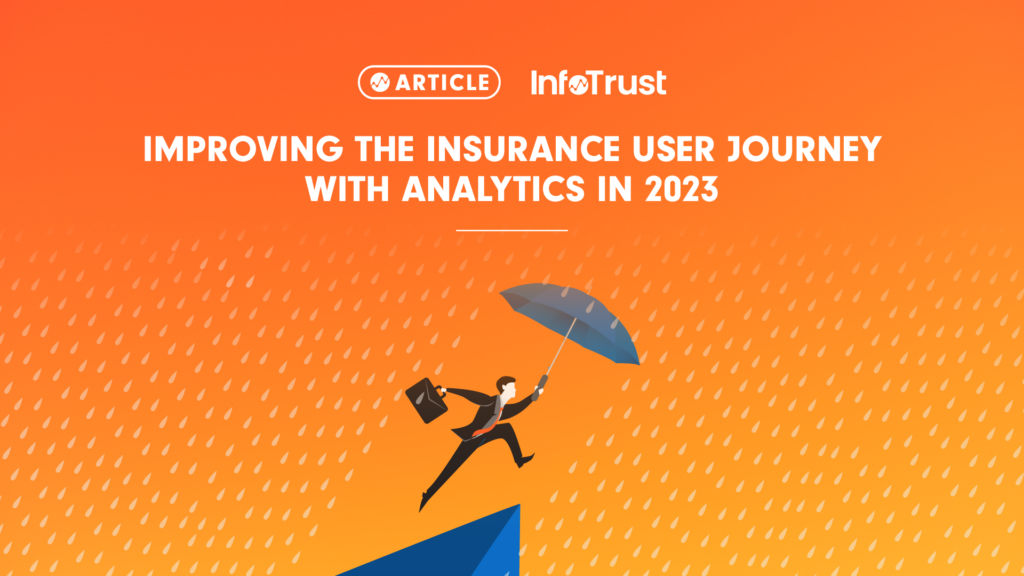Insurance companies rely heavily on user data to make critical decisions about their future growth and revenue. However, this reliance can lead to a one-dimensional view of the customer experience, which is not ideal if you want to compete in today’s marketplace.
Consider the insurance user journey. It goes something like this: a customer discovers they have a need for insurance; they go online and begin researching; they find several options but don’t know which one is best; maybe they contact an agent or call customer service—all while thinking through their options again. Only when they finally decide on a policy do they become engaged with it fully (and hopefully stay engaged).
Stage 1: Discovery
The first stage of the insurance user journey, discovery, is all about the customer finding the right insurance product for their needs. It’s important to understand this stage because it sets the tone for how your customers will interact with you throughout the rest of their experience. If they find what they need quickly and easily during their discovery phase, they’ll be more likely to continue on through all other stages of the user journey.
If they don’t find what they need at this stage then it’s likely that they’ll go somewhere else to get that information—and possibly never come back!
Metrics That Matter
Measures of performance in the discovery phase include the ability of top-of-the-funnel channels, such as paid and organic search, to drive users to learn more about an insurance brand and its products. Understanding how users interact with key landing pages and content assets such as articles, FAQs, downloads, and videos helps insurance companies make decisions about what moves users from one stage to the next. Most of these interactions can even be captured via the out of the box enhanced measurement capabilities of Google Analytics 4 (GA4).
Stage 2: Research and Compare
At the beginning of the journey, users research and explore available products and providers that could meet their needs. In the research and compare phase, users focus on reviewing the available information and comparing the pros and cons of each option.
Insurance companies should focus on reducing friction for users who want to quote and compare policy options. This means avoiding cluttering pages with too many elements, such as headers and call-to-action buttons. Offering users the option to interact with calculators and comparison tables will give them an idea of what to expect if they move to the application stage.
At this stage users may also look for reviews from both satisfied customers as well as dissatisfied ones (if any exist). They often perform research to understand the kind of reputation each company has in terms of customer service and financial stability. Although some of this activity will happen on other websites, steps can be taken to measure the impact of offsite activities.
Metrics that Matter
You’ll want to understand how users interact with the tools you’ve provided them to move forward, for example how often users complete the inputs of a calculator to estimate recommended coverage levels or how often they view comparison charts. Actions like this can be tracked relatively easily using custom event tracking and standard pageviews in Google Analytics.
If you regularly receive traffic from known review sites, consider creating a custom channel group to understand how users referred from key sites impact the overall user journey and ultimately conversion.
Stage 3: Policy Application and Purchase
At this stage, the only thing standing between the user and a new policy is a (hopefully) simple, frictionless application process. Whether this process is fully online, fully offline, or some combination of the two, it is possibly the most important journey to measure properly and completely.
The user should be able to compare different products easily on your site, as well as find out if they are suitable for their needs. For example, if someone wants to insure their car against theft or damage from potholes in the road then they need a suitable product but not necessarily full coverage—so this means looking at factors like price and value rather than just cost alone.
Metrics That Matter
In order to understand where users reach friction and possibly abandon an application, track each step of the application flow for a clear view of the funnel. If the application or purchase user journey takes the user off your site for completion, you can use a Google Analytics feature such as data import or measurement protocol to add offline data that is unique to the user. Taking this additional step also allows you to get a clearer picture of attribution across your distribution channels and visualize performance in GA4 custom exploration reports.
Stage 4: Engage
The fourth stage of the journey requires you to build a relationship with your customers. This is not the same thing as retention, where you maintain their loyalty. Rather, it means engaging them in a way that will keep them coming back to you again and again. Engagement strategies include earning referrals from existing customers, providing personalization or targeted offers, and creating new ways for users to interact with your brand.
Metrics That Matter
Since users at this phase may be less likely to visit your website regularly, channels like email or SMS can unlock new data about user interests. Measures of success for these channels could include performance metrics such as email, text opens, and click-throughs. Collecting data about issue resolution and claims processes via satisfaction surveys will empower insurance brands to understand and optimize the complete customer experience.
In Order to Enhance the User Experience, You Must Understand the Journey
The user journey is a series of steps that a user takes to complete a desired outcome. The journey can be different for every person and depends on the platform, whether mobile, web-based, or offline. Mapping out your users’ journeys makes it easier to measure them with analytics so that you can optimize user touch points accordingly. As we look ahead to 2023, a year that will most certainly present new customer expectations and challenges, analytics will help reveal the steps you need to take to create an experience that is intuitive and efficient for your customers.


